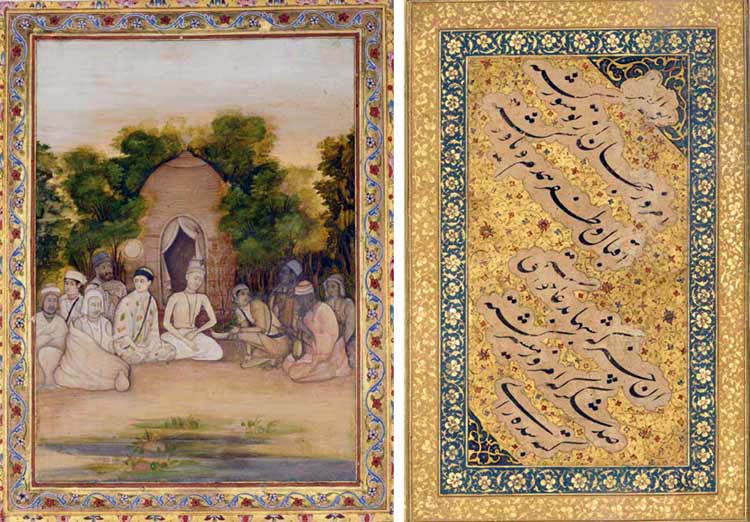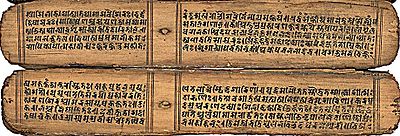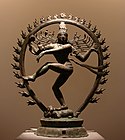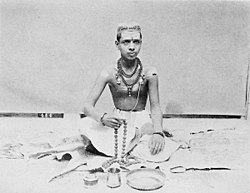Painting1740
Source: http://www.christies.com/LotFinder/search/LotDetail.asp?sid=&intObjectID=4279690&SE=CMWCAT03+1102993+58333782+&QR=M+1+54+Aqc0000900+1050820++Aqc0000900+&entry=india&SU=1&RQ=True&AN=55 (downloaded Apr. 1004)
"A GROUP OF HINDU SAINTS, INSCRIBED MIR-I MIRAN, (WORK OF THE MIR OF MIRS), MUGHAL INDIA, CIRCA 1740-50. Gouache heightened with gold on paper, inscribed in black nasta'liq, illuminated margins with bold flowering tendrils, verso with six lines of fine black nasta'liq, margins trimmed -- Miniature 27.2 x 19.5cm. Calligraphy 17.5 x 9.5cm.
Lot Notes: This picture is probably by Mir Kalan Khan as it is rare for a Mughal artist to have the title Mir. In view of the fact this painting is in the style of Mir Kalan Khan it is probable that he adopted this unusual way of signing his work. The composition of this picture is derived from the lower part of a well known 17th c. picture in the Victoria and Albert Museum depicting followers of Khwaja Mu'inuddin Chishti performing sama' at Ajmer. Most of the figures are directly copied from the row of saints at the bottom of the V&A picture; at the left in the front row are Raidas and Ravidas, the two Kanphata yogis on the right are Matsyendranath and Gorakhnath. The V&A picture is illustrated and discussed by Elinor W. Gadon, in Dara Shikuh's Mystical Vision of Hindu-Muslim Synthesis, Facets of Indian Art, V&A, 1986, pp. 153-7."Relevante Bilder
Relevante Artikel
HinduismusDer Hinduismus, auch Sanatana Dharma genannt, ist mit rund einer Milliarde Anhängern und einem Anteil von etwa 15 % der Weltbevölkerung nach dem Christentum und dem Islam die drittgrößte Religionsgruppe der Erde bzw. eher ein vielgestaltiger Religionskomplex. Seinen Ursprung hat er in Indien. Anhänger des im Ausland häufig verkürzend als polytheistisch wahrgenommenen und in wissenschaftlichen Kreisen als henotheistisch kategorisierten Hinduismus werden Hindus genannt, wobei dieses Hyperonym in seiner Zusammenfassung mehr eine europäisch-kolonialistische Perspektive wiedergibt, als der historischen Entwicklung bzw. den Entwicklungslinien der differenten Religionen Indiens gerecht zu werden. Im Gegensatz zu anderen Religionen gibt es im Hinduismus keinen Religionsstifter, vielmehr entwickelten sich die religiösen Systeme Indiens über einen Zeitraum von ca. 3500 Jahren. .. weiterlesen





































